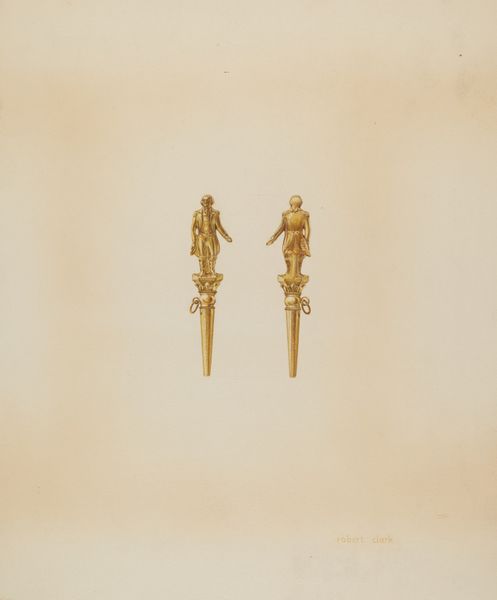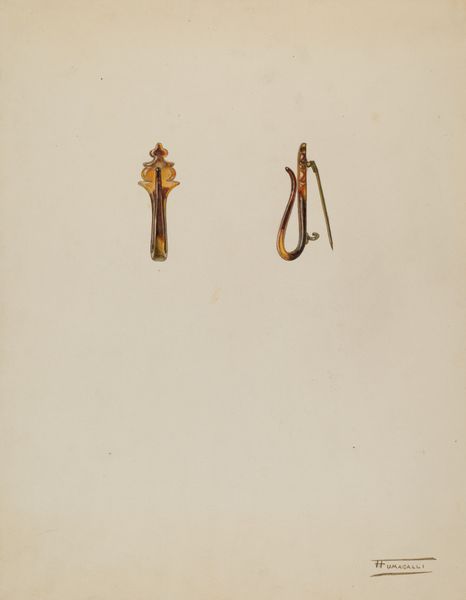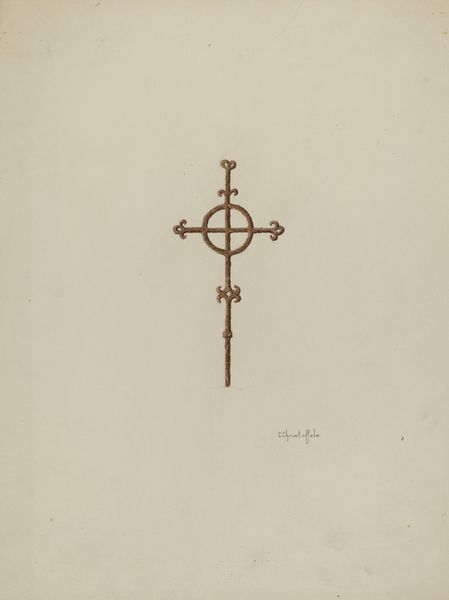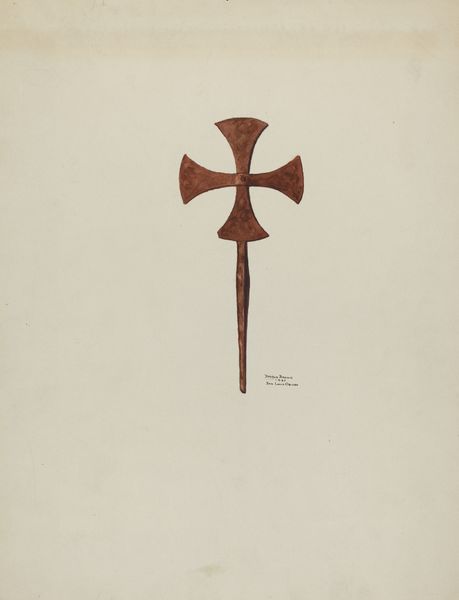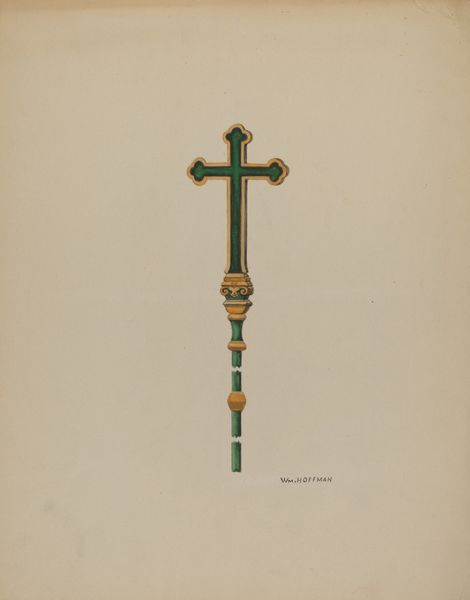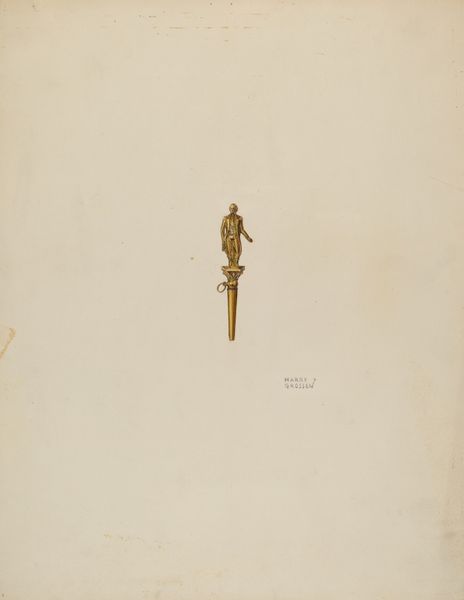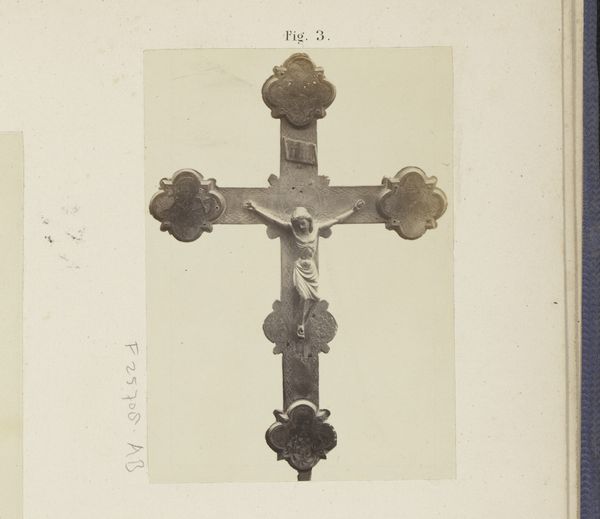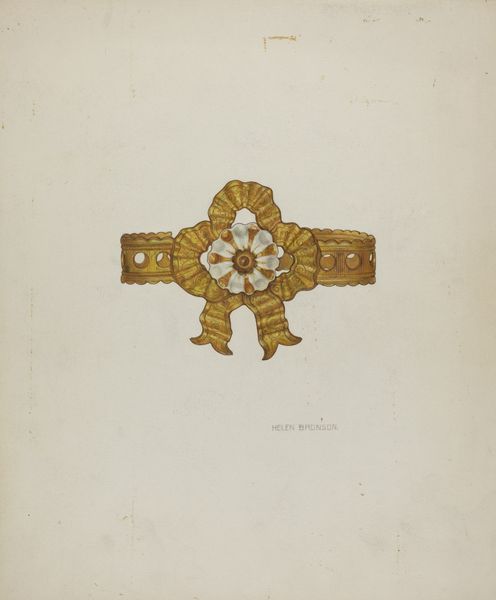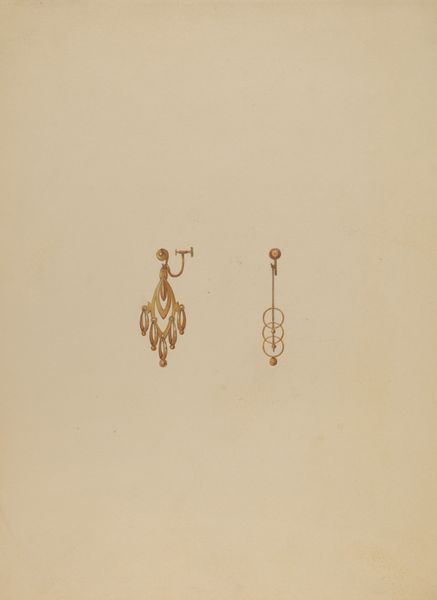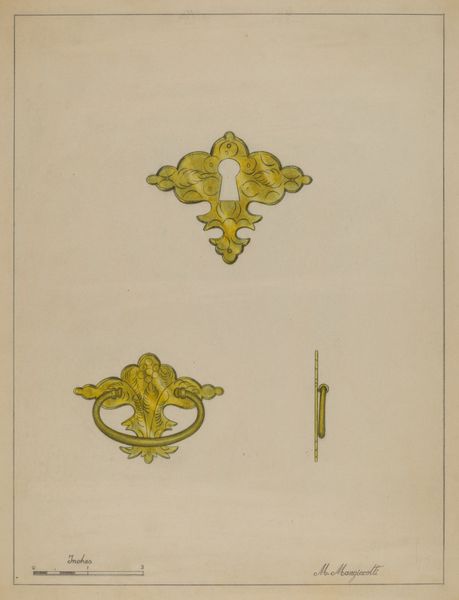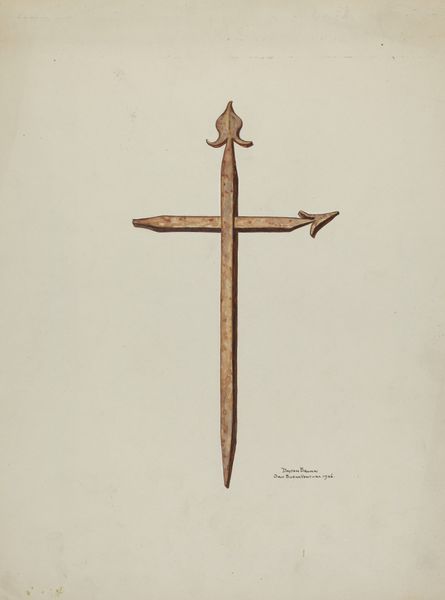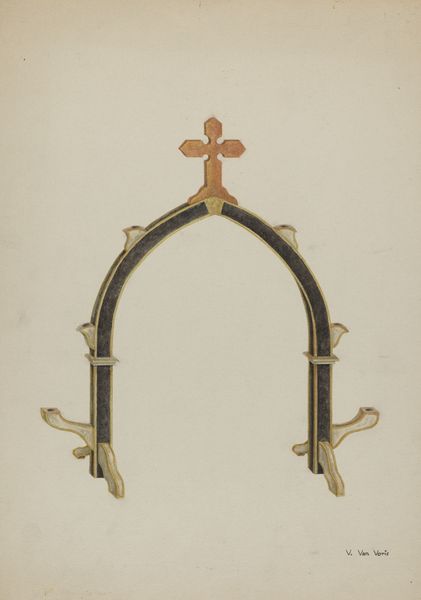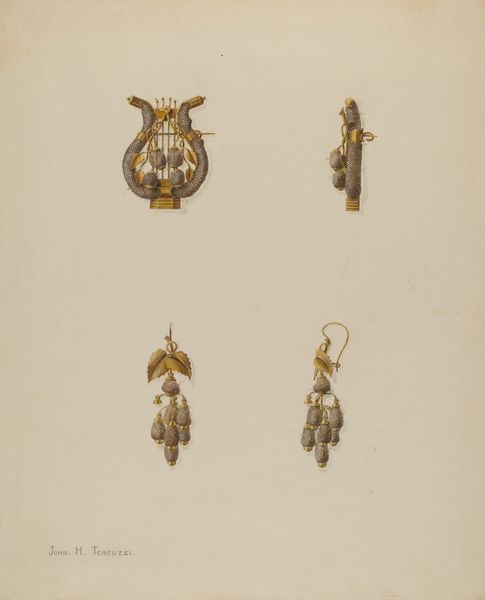
drawing, watercolor
#
drawing
#
water colours
#
light coloured
#
watercolor
#
watercolour illustration
#
decorative-art
#
watercolor
Dimensions: overall: 20.4 x 25.3 cm (8 1/16 x 9 15/16 in.)
Copyright: National Gallery of Art: CC0 1.0
Curator: This watercolor drawing from around 1937, attributed to Vera Van Voris, features two views of a "Cross-shaped Pin". It's quite delicate, wouldn't you agree? Editor: It's so subtle, almost ghostly on the page. The lightness gives it a quality of fragility, of something precious barely clinging to existence. The very faint coloration—gold on one side and nearly translucent on the other—adds to the feeling. Curator: Indeed. What intrigues me is how a simple object can carry such significance. The cross, of course, is laden with religious meaning, but placed within the context of wearable art, it shifts into a more personal statement, doesn't it? It becomes a declaration of faith or belonging, adapted for secular presentation, worn on the body as a statement of self. Editor: The cross as fashion. A public, visual shorthand. But what does it signal here, in 1937? There is the rise of political extremism. Is this a quiet act of faith amidst looming shadows? Or perhaps a statement of personal hope? You've got the obverse, a seemingly embellished side with more visible artistry, and then, on the flip, you've got this relatively undecorated brass plate where the utility of the cross becomes clearer: a wearable piece, held to the wearer’s clothes. Curator: Exactly, it makes you think. Does the choice of a lighter color on the more decorative face imply that it is in someway softer? Is it a feminine coded message of some sort? It also suggests an engagement with memory. After all, symbols evolve in meaning over time, reflecting changing societal values and attitudes, not as static dogmas. A modern reader may not pick up on Van Voris’ intended symbols from nearly a hundred years ago! Editor: That's a very good point. The reading of the artwork is entirely contextual. As we look back, we might never be sure about the artist's intended meaning. But we can ponder on that little gold brooch, the pin clasp, and appreciate that act of symbolic inscription. Curator: The pin becomes a miniature mirror reflecting us across time and the vagaries of collective symbols. Thank you for reflecting on that with me! Editor: My pleasure! It's easy to see the piece just as a curious artifact, but when we explore, we open up new angles of insight and fresh narratives, revealing something genuinely engaging about this historical item.
Comments
No comments
Be the first to comment and join the conversation on the ultimate creative platform.
